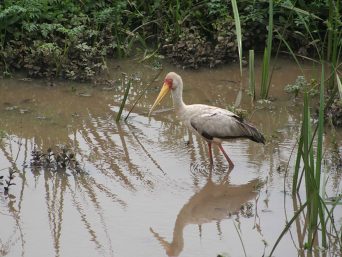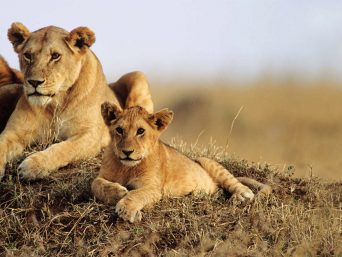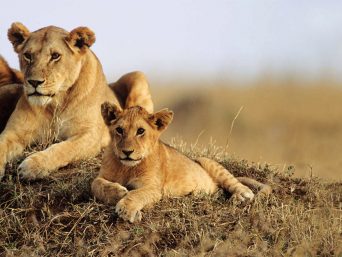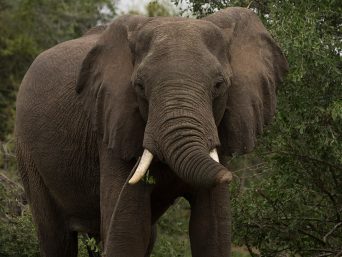Maasai Mara Game Reserve is widely regarded to be the cradle of mankind as well as the Africa’s Greatest Wildlife Reserve and was voted in 2007 as the eighth wonder of the world. It has also been voted among the best safari destination. The Maasai people named the Reserve-Mara, which means spotted, does this relate to the landscape, which is patched with groves of acacia and thorn bushes? It is more likely that the name originated from the speckled inundation of wildebeest and millions of other herbivores during the migration. With its rolling grasslands and wide-open savannah, the Maasai Mara Game Reserve is the kind of African landscape you might see in the movies and documentaries like Big Cats Series which includes Big Cats Diary, Big Cats Live and Big Cats Week, ‘Out of Africa‘ among many more documentaries.
Maasai Mara Game Reserve is located in the southwest of Nairobi; it covers an area of 1,510 square km (583 square mile) and is demarcated by the Serengeti National Park in the South, the Loita Hills in the East, the Esoit Oloololo escarpment in the West, and the Itong Hills in the North. Maasai Mara Game Reserve is part of the Serengeti Mara ecosystem that extends from northern Tanzania into southern Kenya. The two countries share the vast Serengeti plains, with the wildlife free to roam between Kenya and Tanzania in search of good grazing – or prey. The Maasai Mara Game Reserve comprises of open plains, woodlands and riverine forest. Contiguous with the plains of the Serengeti national park, the Maasai Mara Game Reserve is a home to a breathtaking array of wildlife. The vast grassland plains are scattered with herds of Zebra, Giraffe, Gazelle, and Topi. The Acacia forests abound with Birdlife and Monkeys. Elephants and Buffalo wallow in the wide Musiara Swamp. The Mara and Talek rivers which are brimming with Hippos and Crocodiles are also of interest. Maasai Mara Game Reserve is probably the best serviced of all Kenyan Parks and Reserves with a wide range of accommodation for any budget.
The Maasai Mara Game Reserve is a popular and ideal for game drives, Africa weddings and honeymoon, nature walks, a glimpse of the Maasai culture, bush meals by the river and a lifetime experience of eye bird view on a balloon flight safari. Each year Maasai Mara Game Reserve plays host to the world’s greatest natural spectacle, the Great Wildebeest Migration from the Serengeti National Park. From July to October, the promise of rain and fresh life giving grass in the north brings more than 1.3 million Wildebeest together into a single massive herd. They pour across the border into the Maasai Mara Game Reserve, making a spectacular entrance in a surging column of life that stretches from horizon to horizon. At the Mara River they mass together on the banks before finally plunging forward through the raging waters, creating frenzy as they fight against swift currents and waiting crocodiles. By the time they are bidding farewell to the Maasai Mara Game Reserve, they generously deposit about 60,000 tonnes of dung in return.
Mara Conservancies
There are several conservancies that have been created around the Maasai Mara Game Reserve to help protect the Maasai Mara Game Reserve, and to help the Maasai people who live in the area.
- a) Mara North Conservancy; its located in the north of Maasai Mara Game Reserve covering an area of 74,000 acres. The conservancy is a partnership between twelve member camps and over 800 Maasai landowners with the aim of creating a world class conservancy with long-term commitments to the environment, wildlife and the local community.
- b) Motorogi Conservancy and Olare Orok Conservancy; Motorogi Conservancy is an area of 12,000 acres and adjoins the 22,000 acre Olare Orok Conservancy. They are located in the former Koiyaki group ranch and managed as one unit of 34,000 acre. The Olare Orok Consevancy directly adjoins the Maasai Mara Game Reserve to the south and it encompasses the lower river valleys of the Olare Orok and Ntiakitiak rivers, together with the associated riverine woodland as well as the typical open savanna plains of the Serengeti-Mara ecosystem. These two conservancies are specially known for the large numbers of lions to be seen, with several resident prides.
- c) Mara Naboisho Conservancy; its located on the northern side of the Maasai Mara Game Reserve, covering an area of 50,000 acres, and it is in the process of growing. The word Naboisho in the Maa language means ‘to come together’ hence describing the whole purpose of the conservancy. Mara Naboisho boasts stunning landscapes and fantastic wildlife, including some of the highest densities of elephant, giraffe, eland and lion in the Maasai Mara Game Reserve ecosystem.
- d) Ol Kinyei Conservancy; it covers an area of 15,000 acres in the eastern area of the greater Mara ecosystem, close to the Maasai Mara Game Reserve. This conservancy was set up by the Maasai as a sanctuary for wildlife, holding a wide variety of animal species including resident lion prides and leopards in addition to all the wildlife for which the Mara is famous. Ol Kinyei was the first community owned wildlife conservancy to be set up in Mara ecosystem following a model of 1 tent maximum per 700 acres and lease payment to landowners per acre regardless of tourist visitor numbers.
- e) Lemek Conservancy; its located on the northern side of the Maasai Mara Game Reserve, between Mara North Conservancy and Ol Chorro Oiroua. It covers an area of 10,000 acres. It is aimed at conserving the wildlife as well as creates a suitable environment for tourists to view wildlife.
- f) Ol Chorro Oiroua Conservancy; this is a group of ranch located in the Maasai Mara covering an area of 17,000 acres, owned by four major families and 96 different land owners who share the money collected from the park fees according to how many acres the owners have. The revenue that they collect from the tourists is used to ensure that the area has tight security and that the wildlife is protected, as well as ensuring that the roads are in good condition.
Wildlife
There are 95 species of mammals, amphibians and reptiles and over 400 birds species recorded on the reserve including the annual wildebeests migration involving over 1.5 million animals. Nowhere in Africa is wildlife more abundant, and it is for this reason a visitor hardly misses to see the big five (buffalo, elephant, leopard, lion, and rhino). Other game include cheetah, Grant’s gazelle, impala, topi, hyenas, baboons, warthogs, zebras, Coke’s hartebeest, giraffe, Roan antelope and the nocturnal bat-eared fox, not forgetting the hippos and crocodiles in the Mara River. However wildebeest are by far the dominant inhabitants of the Maasai Mara Game Reserve. Most of the visitors go to Maasai Mara Game Reserve between the month of July and October (migration period) when the wildebeest and zebras are at their highest number and offer plenty of food for lions, cheetahs and leopards.






